As the electric vehicle (EV) market continues to expand, two Chinese automotive players, BYD and XPeng, are making significant strides in innovation and technology. Both companies are making waves with their latest offerings, the BYD Seal and the XPeng P7i, in the sedan category. This article will dive into a comprehensive comparison of these two electric sedans, highlighting their technical specifications and the innovations that set them apart.
BYD Seal vs XPeng P7 – Osiągi, zasięg i zużycie w porównaniu
Oba modele mają swoje mocne strony – ale który lepiej pasuje do Ciebie?
Porównaj bezpośrednio osiągi, zużycie, cenę i przestrzeń: BYD Seal czy XPeng P7?
Overview of Models
The BYD Seal, a 2023 model, offers a sleek design complemented by impressive technical prowess. With a choice between rear-wheel drive (RWD) and all-wheel drive (AWD) configurations, it promises a mix of efficiency and performance. On the other hand, the XPeng P7i, the 2024 iteration of XPeng's flagship sedan, boasts a more refined design with competitive specifications aimed at the tech-savvy driver.
Power and Performance
When it comes to horsepower, the BYD Seal offers a robust performance with its two power options: 313 HP for its base variant and a thrilling 530 HP for the performance version. In contrast, the XPeng P7i offers a more modest 276 HP in its entry-level model, while the high-performance variant peaks at 473 HP. Both cars offer compelling acceleration figures, with the Seal achieving 0-100 km/h in just 5.9 seconds for the AWD version, while the XPeng P7i excels with a remarkable 4.1 seconds in its high-performance variant.
Battery and Range
Range anxiety is a common concern among EV buyers, and both BYD and XPeng address this issue effectively. The BYD Seal provides an electric range of 570 km with a consumption rate of 16.6 kWh/100 km, while the XPeng P7i offers slightly more range at 576 km, albeit with a slightly higher consumption of 16.8 kWh/100 km. Both vehicles are designed to ensure that drivers can enjoy lengthy trips without frequent charging stops.
Torque and Top Speed
Torque is a critical specification for electric vehicles as it affects acceleration and driving dynamics. The BYD Seal offers a respectable torque of 360 Nm, while its performance variant pushes this figure to 670 Nm. Meanwhile, the XPeng P7i takes it a notch higher with an entry-level 440 Nm and an impressive 757 Nm in its high-performance model. In terms of top speed, the BYD Seal caps out at 180 km/h, while the XPeng P7i offers a more exciting maximum speed of 200 km/h.
Interior and Space
Inside, both vehicles are equipped with premium materials and modern technology. The BYD Seal features a trunk capacity of 400 liters, making it quite practical for everyday use. The XPeng P7i has a slightly more generous trunk space at 440 liters, providing that extra touch of convenience for the driver. Ultimately, both cars seat five, a common feature for sedans in this category.
Weight and Efficiency
The BYD Seal has a curb weight ranging from 2055 kg for the base variant to 2185 kg for the performance version. The XPeng P7i is just a tad lighter, with its weight ranging from 2020 kg to 2180 kg across its variants. Both vehicles fall under the CO2 efficiency class A, indicating their commitment to sustainability with zero g/km emissions.
Technological Innovations
In terms of technology, XPeng stands out with its advanced driver assistance systems (ADAS) and innovative in-car connectivity features. The XPeng P7i is equipped with a host of driver-assist features that enhance safety and convenience. Meanwhile, BYD is focusing on a balance between utility and performance, integrating technologically advanced infotainment systems that appeal to traditional drivers and tech enthusiasts alike.
Conclusion
In the battle of BYD vs. XPeng, both manufacturers bring unique strengths to the table. The BYD Seal offers impressive power, efficiency, and practicality, making it a strong contender in the electric sedan market. On the other hand, the XPeng P7i provides exceptional performance, advanced technology, and an innovative approach that resonates with consumers seeking a tech-driven vehicle. Ultimately, prospective buyers must weigh their priorities—whether they prioritize raw power, innovative technology, or a balanced blend of both—before making a decision.
Szczegóły techniczne: konkretne różnice między modelami
Koszty i zużycie
Cena zakupu i efektywność to często pierwsze kryteria przy wyborze auta. Tutaj widać, który model lepiej wypada w dłuższej perspektywie – przy tankowaniu, ładowaniu lub zakupie.
BYD Seal ma niewielki przewagę cenową – jego cena zaczyna się od 206400 zł, podczas gdy XPeng P7 kosztuje 217900 zł. Różnica wynosi około 11465 zł.
Pod względem zużycia energii przewagę ma BYD Seal: z wynikiem 15.40 kWh na 100 km jest niewielki bardziej wydajny niż XPeng P7, który zużywa 16.80 kWh. Różnica to około 1.40 kWh.
Pod względem zasięgu XPeng P7 wypada ledwo zauważalny lepiej: osiąga do 576 km, czyli około 6 km więcej niż BYD Seal.
Silnik i osiągi
Moc, moment i przyspieszenie to klasyczne parametry, na których skupiają się entuzjaści – tu widać ciekawe różnice.
Pod względem mocy silnika BYD Seal ma trochę przewagę – 530 KM zamiast 473 KM. To różnica około 57 KM KM.
W przyspieszeniu 0–100 km/h BYD Seal jest minimalny szybszy – 3.80 s wobec 4.10 s. Różnica wynosi około 0.30 s sekundy.
Pod względem prędkości maksymalnej BYD Seal jest prawie niezauważalny lepszy – osiąga 220 km/h, podczas gdy XPeng P7 kończy na 200 km/h. Różnica to około 20 km/h.
Różnica widoczna jest również w momencie obrotowym: XPeng P7 ciągnie nieco mocniej – 757 Nm wobec 670 Nm. Różnica to około 87 Nm.
Przestrzeń i praktyczność
Samochód rodzinny czy codzienny towarzysz – który oferuje więcej miejsca, komfortu i elastyczności?
Oba samochody oferują miejsce dla 5 osób.
Pod względem masy własnej BYD Seal jest minimalny lżejszy – 1907 kg wobec 2020 kg. Różnica to około 113 kg kg.
Pod względem pojemności bagażnika XPeng P7 oferuje ledwo zauważalny więcej miejsca – 440 L wobec 400 L. To różnica około 40 L litrów.
Pod względem ładowności BYD Seal wypada niewielki lepiej – 473 kg wobec 430 kg. Różnica to około 43 kg kg.
Kto wygrywa pojedynek?
BYD Seal okazał się wygrywa pewnie i tym samym zdobywa tytuł DriveDuel Champion!
W tym porównaniu BYD Seal to bardziej wszechstronny wybór.
 @ BYD Auto / BYD Global Media
@ BYD Auto / BYD Global Media
BYD Seal
BYD Seal
BYD Seal to elektryczny fastback, który łączy spektakularny, sportowy design z wygodą codziennego użytkowania — wygląda drożej, niż sugeruje jego oferta. Dla kierowców szukających stylu, ciszy i nowoczesnych rozwiązań to propozycja, która potrafi uśmiechnąć się do portfela i jednocześnie przypomnieć, że przyszłość motoryzacji potrafi być całkiem zabawna.
szczegóły @ BYD Auto / BYD Global Media
@ BYD Auto / BYD Global Media
 @ BYD Auto / BYD Global Media
@ BYD Auto / BYD Global Media
 @ BYD Auto / BYD Global Media
@ BYD Auto / BYD Global Media
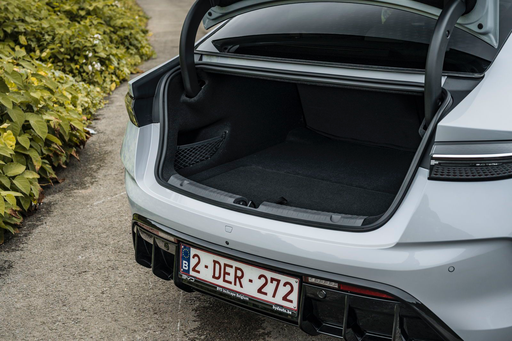 @ BYD Auto / BYD Global Media
@ BYD Auto / BYD Global Media
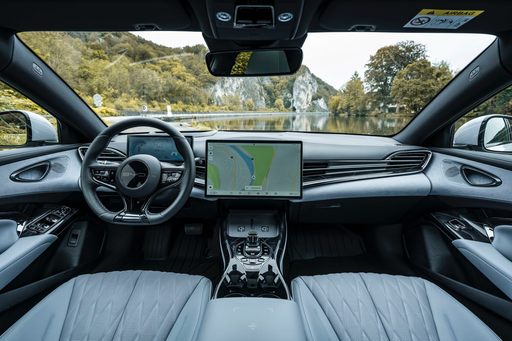 @ BYD Auto / BYD Global Media
@ BYD Auto / BYD Global Media
XPeng P7
P7 to niezwykły model, który łączy nowoczesny design z doskonałą dynamiką jazdy. Jego unikalne linie przyciągają wzrok, a wnętrze oferuje komfort i zaawansowane technologie. To samochód, który z pewnością zaspokoi oczekiwania zarówno pasjonatów motoryzacji, jak i codziennych kierowców.
szczegóły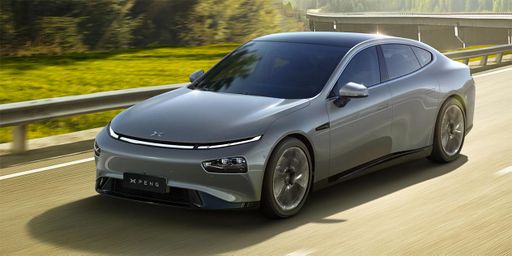 @ XPeng Motors
@ XPeng Motors
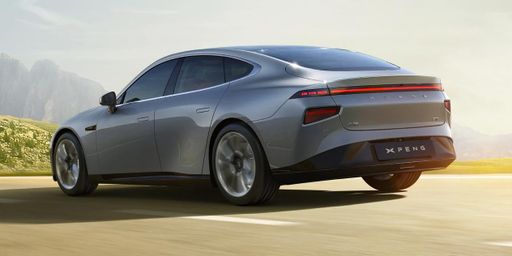 @ XPeng Motors
@ XPeng Motors
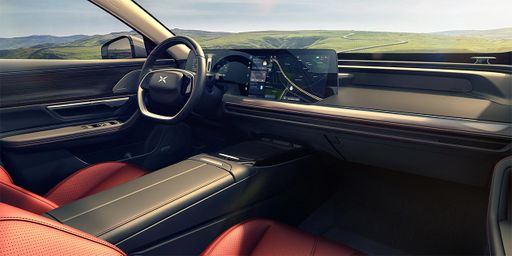 @ XPeng Motors
@ XPeng Motors
 @ BYD Auto / BYD Global Media
@ BYD Auto / BYD Global Media
|
 @ XPeng Motors
@ XPeng Motors
|
|
|
|
Koszty i Zużycie |
|
|---|---|
|
Cena
206400 - 232800 zł
|
Cena
217900 - 257400 zł
|
|
Zużycie L/100km
-
|
Zużycie L/100km
-
|
|
Zużycie kWh/100km
15.4 - 18.2 kWh
|
Zużycie kWh/100km
16.8 - 19.2 kWh
|
|
Zasięg elektryczny
460 - 570 km
|
Zasięg elektryczny
505 - 576 km
|
|
Pojemność baterii
-
|
Pojemność baterii
82.70 kWh
|
|
CO2
0 g/km
|
CO2
0 g/km
|
|
Pojemność zbiornika paliwa
-
|
Pojemność zbiornika paliwa
-
|
Wymiary i Nadwozie |
|
|---|---|
|
Typ nadwozia
Sedan
|
Typ nadwozia
Sedan
|
|
Miejsca siedzące
5
|
Miejsca siedzące
5
|
|
Drzwi
4
|
Drzwi
5
|
|
Masa własna
1907 - 2185 kg
|
Masa własna
2020 - 2140 kg
|
|
Pojemność bagażnika
400 L
|
Pojemność bagażnika
440 L
|
|
Długość
4800 mm
|
Długość
4888 mm
|
|
Szerokość
1875 mm
|
Szerokość
1896 mm
|
|
Wysokość
1460 mm
|
Wysokość
1450 mm
|
|
Maksymalna pojemność bagażnika
-
|
Maksymalna pojemność bagażnika
-
|
|
Ładowność
446 - 473 kg
|
Ładowność
430 kg
|
Silnik i Wydajność |
|
|---|---|
|
Typ silnika
Elektryczny
|
Typ silnika
Elektryczny
|
|
Skrzynia biegów
Automatyczna
|
Skrzynia biegów
Automatyczna
|
|
Szczegóły skrzyni biegów
Reduktor
|
Szczegóły skrzyni biegów
Reduktor
|
|
Rodzaj napędu
Napęd na tylne koła, Napęd na cztery koła
|
Rodzaj napędu
Napęd na tylne koła, Napęd na cztery koła
|
|
Moc KM
231 - 530 KM
|
Moc KM
276 - 473 KM
|
|
Przyspieszenie 0-100km/h
3.8 - 7.5 s
|
Przyspieszenie 0-100km/h
4.1 - 6.7 s
|
|
Maksymalna prędkość
180 - 220 km/h
|
Maksymalna prędkość
200 km/h
|
|
Moment obrotowy
360 - 670 Nm
|
Moment obrotowy
440 - 757 Nm
|
|
Liczba cylindrów
-
|
Liczba cylindrów
-
|
|
Moc kW
170 - 390 kW
|
Moc kW
203 - 348 kW
|
|
Pojemność silnika
-
|
Pojemność silnika
-
|
Ogólne |
|
|---|---|
|
Rok modelowy
2023 - 2025
|
Rok modelowy
2024
|
|
Klasa efektywności CO2
A
|
Klasa efektywności CO2
A
|
|
Marka
BYD
|
Marka
XPeng
|
Jakie rodzaje napędu ma BYD Seal?
BYD Seal jest dostępny z napędem Napęd na tylne koła albo Napęd na cztery koła.
Wyświetlane ceny i dane są szacunkowe, oparte na niemieckich cenach katalogowych i mogą się różnić w zależności od kraju. Te informacje nie stanowią wiążącej oferty.
